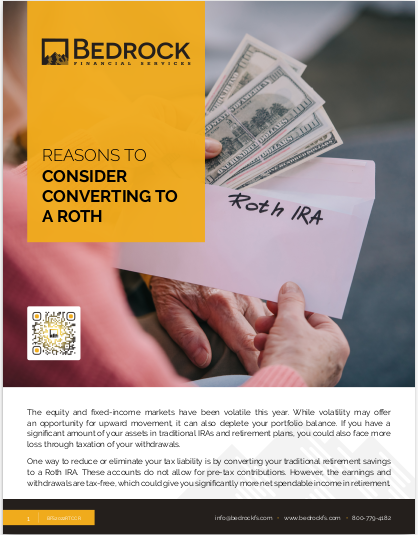Key Takeaways
-
Setting up strategic CRM triggers transforms passive contacts into active prospects without constant manual effort.
-
Automated behavioral triggers not only improve lead engagement but also shorten the sales cycle significantly.
Why Triggers Matter More Than Features in 2025
You may have chosen your CRM for its features, integrations, or interface. But in 2025, what separates a functional CRM from a revenue-producing machine is not what it shows you—it’s what it does for you. The best-performing insurance agents aren’t manually chasing every lead. They’re using triggers to create a system that responds before they even need to.
CRM triggers are automated responses to contact actions, changes in data, or passage of time. Set them up right, and they become your silent assistants—responding, reminding, and re-engaging while you focus on high-value conversations.
Let’s walk through how to use them strategically to do the selling for you.
1. Behavioral Triggers That Engage at the Right Time
Not all prospects need a follow-up call today. But some need it right now. Behavioral triggers help you prioritize who gets your attention and when.
Top Behavioral Triggers for Agents:
-
Page Visit Tracking: When a contact views your “Medicare Basics” page three times in a week, that’s not casual browsing. That’s interest.
-
Email Opens and Clicks: Trigger an automatic follow-up task if a contact clicks on a benefits breakdown link but doesn’t book a call.
-
Form Abandonment: If someone starts your quote request form but doesn’t finish, a gentle nudge within 24 hours can revive that lead.
Set a CRM trigger to tag them as “Hot Lead” and assign a call task immediately. That kind of timing turns interest into conversion.
2. Date-Based Triggers That Never Let Opportunities Slip
Insurance sales revolve around timing. People become eligible, lose coverage, renew policies, and age into plans every day. But do you have time to manually track every date across your book of business?
That’s where date-based triggers win.
Useful Date Triggers to Set Up Now:
-
Turning 65 in 90 Days: Trigger a Medicare information email sequence followed by a call task when someone’s DOB hits that window.
-
Policy Renewal in 30 Days: Trigger a review prompt and assign a call to discuss options and possible savings.
-
Last Contacted > 60 Days Ago: Trigger a re-engagement message that checks in and reopens conversation.
These small actions—when consistently delivered by your CRM—build trust, show reliability, and keep you top-of-mind.
3. Lead Source Triggers That Customize Follow-Up
Not all leads enter your CRM the same way, so why would they receive the same message? Triggers based on lead source allow you to customize the tone, timing, and content of follow-up.
Segment Follow-Up by Source:
-
Webinar Attendees: Trigger a personalized thank-you email plus a resource download within 1 hour of the session ending.
-
Referral from Client: Send a warm message referencing the referring client and offering a fast-track meeting slot.
-
Facebook Lead Form: Follow with a casual tone email or SMS, since these leads often require a softer approach.
You’ll close faster when your message meets the context of their entry point.
4. Qualification Triggers That Flag Priority Leads
Qualification often happens after the first call—but what if you could tag urgency before you ever pick up the phone?
By assigning a point system to fields like income, coverage need, ZIP code, or response time, your CRM can automatically prioritize leads.
How to Set Up Qualification Triggers:
-
Income > $50,000 + Lives Alone + Response Time < 1 hour: Trigger a task labeled “Priority Lead” with a call scheduled within 24 hours.
-
Multiple Dependents + No Current Coverage: Trigger an email series tailored to families and a calendar invite.
These rules help you work smarter—not harder—by ensuring the most valuable conversations happen first.
5. Cross-Selling Triggers That Add Value (and Revenue)
You already know that retaining a client and selling them a second product is easier than acquiring a new lead. But unless you trigger that cross-sell at the right moment, it’s a missed opportunity.
Trigger Ideas for Cross-Selling:
-
6 Months After Plan Enrollment: Send an email offering a policy review that includes dental, vision, or hospital indemnity options.
-
Birthday Month: Trigger a happy birthday message and include a quick checklist of available supplemental products.
-
New Dependent Added: Trigger a task to discuss life insurance or family coverage needs.
Your CRM can tee up these moments automatically so you don’t have to scan records every week.
6. Triggered Drip Campaigns That Nurture Without Effort
Some leads aren’t ready to convert today, but that doesn’t mean they’re cold. Setting up triggered drip sequences keeps you in their inbox—and their mind—until the timing is right.
Sample Drip Triggers:
-
Form Completed but No Appointment Booked: Send a 5-email sequence spaced over 10 days explaining coverage basics and answering common objections.
-
Requested a Quote but Didn’t Respond: Trigger a 3-message series over the next 7 days, including a call scheduler link in each.
These automated touches mimic persistence without pressure, which is key in insurance sales.
7. Re-Engagement Triggers That Revive Dormant Leads
Leads that ghosted you months ago might still be good—they just weren’t ready. Instead of forgetting them, use re-engagement triggers.
Best Practices for Re-Engagement:
-
Last Interaction > 120 Days Ago: Send a short check-in email asking if they’re still exploring options.
-
Didn’t Open Last 3 Emails: Trigger an SMS message with a quick “still want help?” prompt.
-
End of Year (November-December): Trigger a general reactivation campaign to old leads before Open Enrollment ends.
It’s not about annoying them—it’s about giving them one last chance to say yes.
8. Internal Triggers That Keep You Organized
Your CRM can also trigger internal alerts and tasks—not just external messages. These keep you accountable, prompt follow-ups, and prevent your pipeline from slipping through the cracks.
Internal Triggers to Use:
-
New Lead Added: Auto-assign to your pipeline and create a 3-day follow-up schedule.
-
Status Changed to “Interested”: Add a note template to prompt detailed call prep.
-
Client Flagged as “Needs Review”: Trigger a task for policy audit at the end of the week.
When your CRM works behind the scenes, you stop operating from memory and start working from process.
Building Trigger Logic in 2025 CRMs
Modern CRMs offer visual workflow builders to create trigger-based automation. Whether it’s a drag-and-drop builder or logic tree, your goal is to:
-
Set a clear condition (e.g., opened email, 60 days inactive)
-
Link it to an action (e.g., send email, create task)
-
Define timing (e.g., immediately, delay by 2 days)
-
Apply segmentation (e.g., Medicare clients only)
Take one hour each week to review and refine your workflows. Automate one new task monthly. Over time, your CRM becomes not a tool you use—but a system that works for you.
Why This Matters for Insurance Agents in 2025
In today’s sales landscape, response time, personalization, and timing matter more than product pitch. Triggers give you an edge by:
-
Ensuring no lead slips through the cracks
-
Customizing follow-up without extra effort
-
Freeing your time for complex or high-value conversations
Insurance is still about people—but in 2025, technology gets you to the right people faster and more consistently.
Turn Automation Into Real Sales Support
If you’ve only scratched the surface of your CRM, now’s the time to go deeper. Strategic triggers are what take you from working leads manually to working them intelligently.
At Bedrock Financial Services, we help agents like you build automation that sells. From trigger workflows to CRM optimization, we’ll help you turn your tech into traction.
Sign up today to learn how our systems can help you close more—by doing less.







